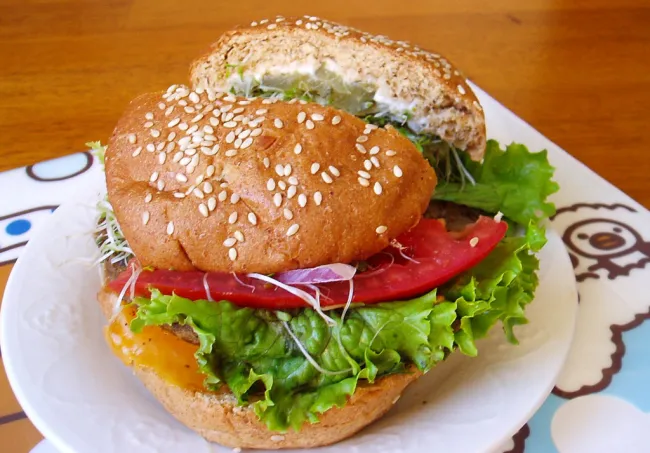In this paper, using three scenarios for food demand, the researchers model and highlight the indirect relationship between greenhouse gas (GHG) emission abatement within the food supply system and the energy system, globally.

Since almost a quarter of global emissions stem from agriculture and other land-use related activities – CO2 (carbon dioxide) from land-use change, CH4 (methane) from anaerobic environments (irrigated rice productions, rumination, and manure systems), and N2O (nitrous oxide) from fertilizers – the study used a global food and agriculture, World Food Supply Model (WOFSUM), to simulate how different developments in agriculture emissions affect the emission space for a transitioning energy-system. The WOFSUM was linked with a global energy-transition-system model (GET-climate) to estimate the net present value of energy system mitigation costs over the extrapolation period, from 2050 to 2170, for three dietary scenarios (i.e. the monetary cost). The global stabilization target of 2 °C above the pre-industrial level was given.
The three dietary scenarios the study used were: Reference based on current trends, Non-ruminant which transitioned toward a diet high in pork and poultry meat, but without beef, dairy or other ruminant products, and Vegan which transitioned toward a vegan diet.
The modelling approach taken is outlined in detail with additional supplementary available online. Briefly, all scenarios only differed in the diets modelled and thus in the resulting CH4 and N2O emissions. All use the same optimistic assumptions about developments in agriculture productivity and mitigating measures. The GET-climate model represented five end-use sectors (electricity, transport, feedstock, residential-commercial heat, and industrial process heat) with demand projections based on a stabilization level. Again, technological advances in this sector were included in the model. The two lower GHG emissions diets transitioned from the Reference in 2020, reaching 95% by 2060, the food type compositions of the diets transitions are illustrated in the supplementary Figure S1 (below).

The results showed, as expected, that the scenarios that phased out ruminant products had lower levels of CH4 and N2O emissions than the Reference – see Figure 1 below. The large difference in CH4 emissions in Reference compared to Non-ruminant and Vegan is due to the dominant role of ruminants for agricultural CH4 emissions. The remaining small CH4 difference between Non-ruminant and Vegan result from emissions from pork production and manure management. The N2O emissions were different for all three scenarios, because of the step-change differences in feed-to-plate efficiency between the diets.

The authors explain that with less radiative forcing from agricultural CH4 and N2O there is more “room” for CO2 emissions, and thus the energy transition away from fossil fuel technologies can be delayed (although see a very useful critique of this perspective here). The net present value of energy system mitigation costs were compared to projected global aggregate GDP over the period, they calculated an increase over time for all three scenarios, but with the fastest increase in Reference.
When discussing the results, the authors point out they did not include any impacts that changed diets could have on farmers’ or landowners’ profits. Also not included were any potentially positive health effects from lower human consumption of red meat, or any biological conservation benefits from the likely reduced demand for land from the alternative diets.
The paper concludes that changing from the Reference to the Non-ruminant diet significantly reduces the energy-system cost of meeting binding climate targets – for a 2°C target, the reduction calculated in net present value was approximately 25%. They assert the result is robust over a wide span of climate goals, and “The amount of meat in the diet is not of central importance; the amount of ruminant product is”.
For alternative perspectives on the merits of ruminant versus monogastric meat, you may like to look at the following papers and reports:
Garnett, T., Röös, E. and Little, D. (2015). Lean, green, mean, obscene…? What is efficiency? And is it sustainable? Food Climate Research Network, University of Oxford.
Röös, E., Patel, M., Spångberg, J., Carlsson, G., Rydhmer, L., (2016) Limiting livestock production to pasture and by-products in a search for sustainable diets, Food Policy, Volume 58, Jan 2016, pp 1–13, doi:10.1016/j.foodpol.2015.10.008. and the associated blog ‘If farm animals only graze pastures and eat by-products – livestock problem solved?’
Schader, C., Muller, A., Scialabba, N.E.-H., Hecht, J., Isensee, A., Erb, K.-H., Smith, P., Makkar, H.P.S., Klocke, P., Leiber, F., Schwegler, P., Stolze, M., and Niggli, U. (2015) Impacts of Feeding Less Food-Competing Feedstuffs to Livestock on Global Food System Sustainability. Journal of The Royal Society Interface 12 (113), 20150891.
Abstract
We investigate how different global dietary scenarios affect the constraints on, and costs of, transforming the energy system to reach a global temperature stabilization limit of 2 °C above the pre-industrial level. A global food and agriculture model, World Food Supply Model (WOFSUM), is used to create three dietary scenarios and to calculate the CH4 and N2O emissions resulting from their respective food-supply chains. The diets are: (i) a reference diet based on current trends; (ii) a diet with high (reference-level) meat consumption, but without ruminant products (i.e., no beef, lamb, or dairy, only pork and poultry); and (iii) a vegan diet. The estimated CH4 and N2O emissions from food production are fed into a coupled energy and climate-system optimization model to quantify the energy system implications of the different dietary scenarios, given a 2 °C target. The results indicate that a phase-out of ruminant products substantially increases the emission space for CO2 by about 250 GtC which reduces the necessary pace of the energy system transition and cuts the net present value energy-system mitigation costs by 25%, for staying below 2 °C. Importantly, the additional cost savings with a vegan diet — beyond those achieved with a phase-out of ruminant products — are marginal (only one additional percentage point). This means that a general reduction of meat consumption is a far less effective strategy for meeting the 2 °C target than a reduction of beef and dairy consumption.
Reference
Bryngelsson, D., Hedenus, F., Johansson, D.J., Azar, C. and Wirsenius, S., 2017. How Do Dietary Choices Influence the Energy-System Cost of Stabilizing the Climate?. Energies, 10(2), p.182.
Read the full article here (open access).




Comments (0)